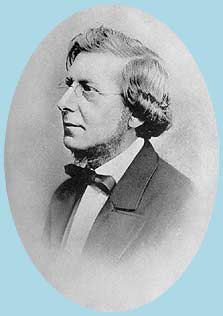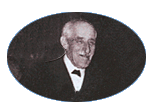 |
|||||||
 |
|||||||
|
at Husborne Crawley During the 1940s |
|||||||
|
|
|||||||
A local man remembers....
At that time Rothamsted Experimental Station, already more than 30 years old, was the only one in existence in Great Britain. It was the private property of Sir John Lawes who had founded it in 1843.
One of the chief problems to be investigated was to discover the extent to which the productiveness of the soil was influenced by the feeding of such concentrated foods, such as cake and corn to the livestock on the farm.
Also the Woburn site with its light soil was a suitable location to enable comparison of findings of similar experiments carried out on the heavier soil at Rothamsted
The scientific side was under Sir John Lawes and Dr. Voelcker, later Dr. Voelcker alone, and after 1884 by his son Dr. J A Voelcker.
The area of the station is 131 acres, and the cost to the estate from 1876 to 1896 was approximately £885 per annum.


Doug Neale shared his memories of life in the village and working on the farm during 1940s with us.
Now 76, Doug was born, went to school and still lives in Husborne Crawley. He started work as an apprentice groom but when war broke out in 1939 his mother found him a job in the Experimental Station. He earned 10 shillings (50p) a week. He worked at the farm for 9 years, leaving in 1948 for a farm job with a tied cottage. He needed to provide a home for his new wife - he married in 1949.
He remembers that the Dairy farm, although now part of the Experimental Station was then a dairy farm in it's own right - where he milked his first cow when he was 11. The experimental station was in Mill Road, Ridgmont. Here, the farm encompassed land for sheep and pig rearing, arable land for crop work and a laboratory. Stock Yard Field, Woburn Road was laid out in plots permanently growing wheat or barley. It was found that barley grew better on the lighter soil.
The farm experimented for years and years with the same crops, harvesting them by thrashing. On each plot the crops were harvested, stacked and covered. The chaff, straw and grain were separated, weighed and samples sent to the laboratory for analysis.
The work on crop planning and rotation was complex. Doug's main job was to tend the arable plots, although he also fed the pigs.


Dr Mann was the leading light of the village, with a worldwide reputation for his scientific knowledge of the cultivation of tea. He travelled extensively to Russia, India, Africa and the Middle East to advise. Doug remembers the first time he saw Indians when Dr Mann invited them to visit the station. They were particularly interested in a green crop called Lucerne. This produced two crops per year or silage in later years.
Other work he remembers at the farm included the introduction of artificial fertilizers: potash and nitrates, with comparative studies of farm manure. Also studies of root depth and its effect on growth were carried out. Work with animals included finding acceptable numbers of sheep to a pen. The farm also undertook pneumatic tyre tension tests by H J Hine and Jim Purchase for the British Rubber Producers Association and although for the work they used mainly animal drawn farm equipment, Ford sent tractors for testing after which they were returned to Dagenham for stripping down and assessment of wear and tear.

Jim Purchase of the BRPRA,
Bert Sibley, Farm Worker, and William McCallum, Farm Foreman
The laboratory is no longer in use, all laboratory experiments are now carried out at Rothamsted.




To quote Doug, "They were not really bad old days"